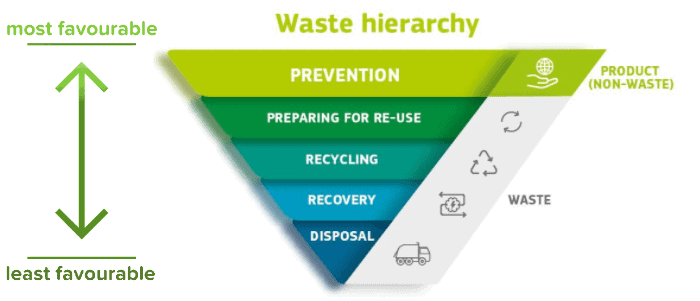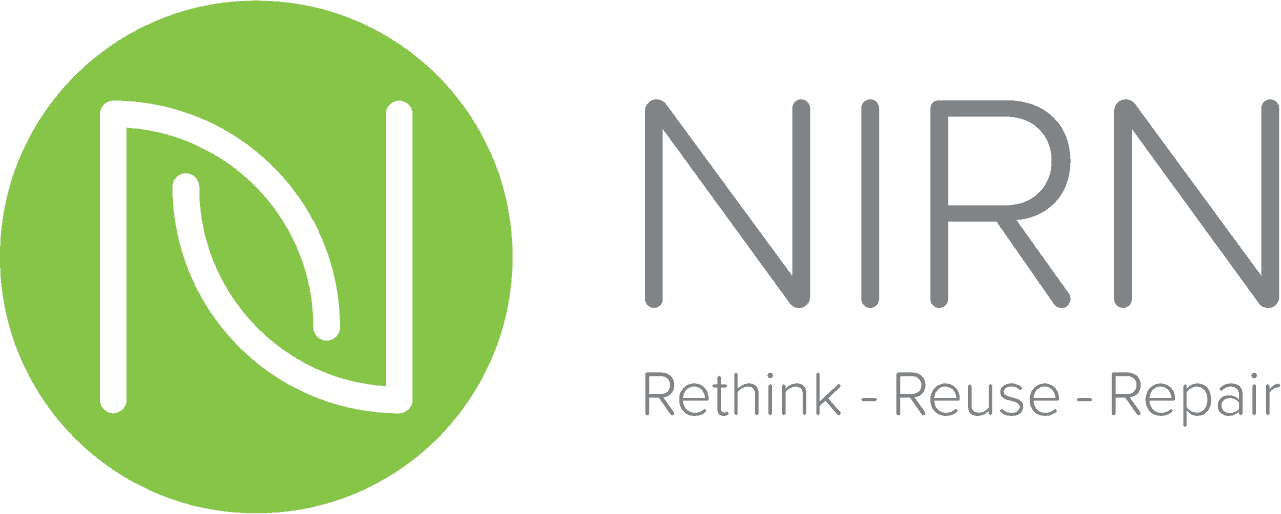Reuse and Repair
Waste Management Hierarchy
The Waste Management Hierarchy ranks waste according to what is best for the environment and gives priority to preventing waste. The challenge is to encourage a move from the lowest part of the hierarchy – disposal and energy recovery where most waste currently sits and and move up the hierarchy.
NIRN and its members sit within the preparing for reuse and are actively supporting and growing activity in this area.

Prevention: Using less material in design and manufacture; keeping products for longer.
Preparing for Reuse: Keeping products for longer or reusing them; using less hazardous materials; checking, cleaning, repairing, refurbishing, whole items or spare parts.
Recycling: Turning waste into a new substance or product; includes composting if it meets quality protocols.
Energy Recovery: Includes anaerobic digestion, incineration with energy recovery, gasification and pyrolysis which produce energy (fuels, heat and power) and materials from waste; some backfilling.
Disposal: Landfill and incineration without energy recovery.
Reuse and repair are at the heart of the Circular Economy, and UK strategy aimed at maintaining the value of products, materials and resources within the economy for as long as possible, and to minimise the generation of waste. It is an opportunity to do more with less, better use available resources and reduce waste in the first place while promoting new forms of employment and tackling inequality.
Reuse and repair contribute to this vision by extending the lifespan of products and materials respectively.
Within Northern Ireland according to figures for 2019/20 from the Department of Agriculture, Environment and Rural Affairs (DAERA), Household waste accounted for 88.2 per cent of all waste collected. The recycling rate for household waste was 51.9 per cent, while the landfill rate for household waste was 23.7 per cent.
Reuse
Reuse ensures that goods such as clothing, appliances or furniture stays in use for as long as possible. Activities to support reuse include trading or swapping (e.g. in charity shops, second hand stores or online), borrowing, leasing and up-cycling.
Reuse is the preferred environmental option for managing our resources because it prevents a product from becoming waste and reduces demand for new products. About 40% of global greenhouse gas emissions are associated with the manufacture and distribution of products, so by reusing we can reduce our climate impact.,
Repair
Repair is a key reuse activity that helps products to last for longer. Community repair prevents waste, saves CO2 and supports job creation.
A recent study by Oko-Institut found that repairing and keeping products televisions, smartphones, washing machines and notebooks going for longer could save 3.93 million tonnes of CO2 equivalents (CO2e) per year in Germany alone.
The Right to Repair is about facilitating repair, ensuring products are designed for repair and supporting repairers of all kinds. The European Commission adopted repairability requirements on October 1st 2019 affecting TVs, monitors, fridges, freezers, washing machines, washer-dryers, dishwashers and lighting products. These requirements will impact way our products are manufactured and used from 2021 through minimum repairability requirements aimed at extending their lifetime.
More still needs to be done. For the RREUSE response to these developments read here.
How and Where to Repair
There are lots of repair centres and resources to help you repair your stuff.
Repair Cafes are free meeting places that are all about repairing things together. To find out how to set up a repair cafe visit here. You can also find all kinds of tips for repair and maintenance on their website, for smartphones, bicycles, vacuum cleaners, coffee makers, jewelery, lamps and sewing machines.
